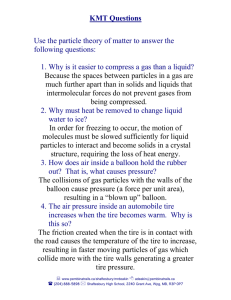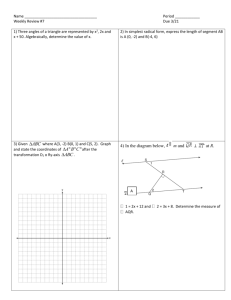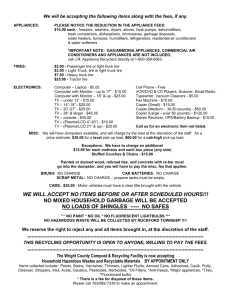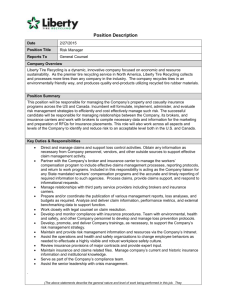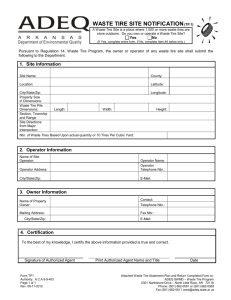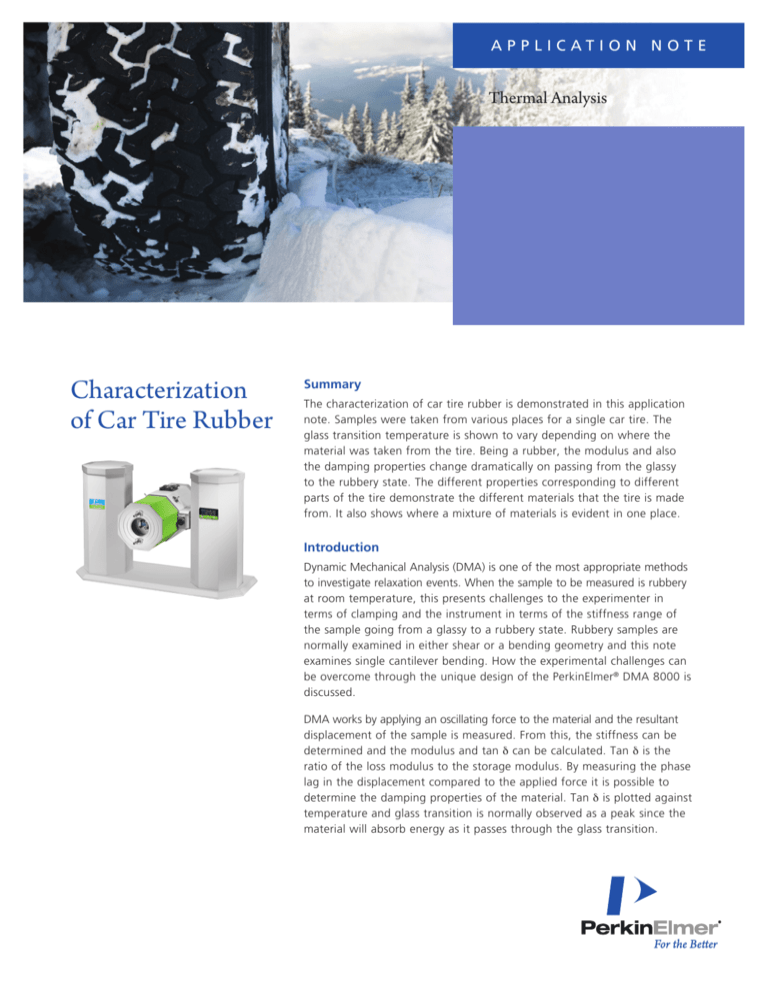
a p p l i c at i o n N o t e
Thermal Analysis
Characterization
of Car Tire Rubber
Summary
The characterization of car tire rubber is demonstrated in this application
note. Samples were taken from various places for a single car tire. The
glass transition temperature is shown to vary depending on where the
material was taken from the tire. Being a rubber, the modulus and also
the damping properties change dramatically on passing from the glassy
to the rubbery state. The different properties corresponding to different
parts of the tire demonstrate the different materials that the tire is made
from. It also shows where a mixture of materials is evident in one place.
Introduction
Dynamic Mechanical Analysis (DMA) is one of the most appropriate methods
to investigate relaxation events. When the sample to be measured is rubbery
at room temperature, this presents challenges to the experimenter in
terms of clamping and the instrument in terms of the stiffness range of
the sample going from a glassy to a rubbery state. Rubbery samples are
normally examined in either shear or a bending geometry and this note
examines single cantilever bending. How the experimental challenges can
be overcome through the unique design of the PerkinElmer® DMA 8000 is
discussed.
DMA works by applying an oscillating force to the material and the resultant
displacement of the sample is measured. From this, the stiffness can be
determined and the modulus and tan δ can be calculated. Tan δ is the
ratio of the loss modulus to the storage modulus. By measuring the phase
lag in the displacement compared to the applied force it is possible to
determine the damping properties of the material. Tan δ is plotted against
temperature and glass transition is normally observed as a peak since the
material will absorb energy as it passes through the glass transition.
Equipment Experimental Conditions
DMA 8000
Sample:
Michelin® Car Tire
1L Dewar
Geometry:
Single Cantilever Bending
Dimensions:
7.5–12.5 (l) x 4.9–9.0 (w) x
2.5–4.6 (t) mm
Temperature:
-150 °C to 100 °C at 3 °C min-1
Frequency:
1.0 Hz
Results and conclusion
Figure 1 shows the glass transition of these materials as a
peak in the tan δ and a drop in modulus. As stated in the
experimental section, the sample was clamped only after it
had reached a glassy state. This avoids spread in the clamps
and makes the measurement more accurate. The DMA
8000 is designed so that the oven can be removed from the
instrument very quickly to allow reclamping. This feature
prevents significant condensation of water on the surface of
the sample and also avoids the sample returning to a rubbery
state before it was possible to tighten the clamps.
Figure 1. Glass transition of tire rubber.
Most car tires are predominantly made from polybutadiene,
but various grades of this material are used on different
parts of the tire. DMA can be used to show where the various
grades are located and areas where overlapping materials
are evident.
Experimental
Temperature scan of car tire rubber.
The data also shows a drop in modulus of three orders of
magnitude. This is well within the instrument parameters
and means that experiments where the stiffness of a material
changes dramatically can be examined in a DMA 8000 in
one experiment over the entire temperature range of interest.
It is clear that the various areas of the car tire are constructed
from different materials. It is interesting that the sample
taken from the sidewall near the tread shows two glass
transitions indicating there is a mix of materials in this
region. This is not surprising as this is the area where the
tread and the sidewall meet. Car tires are manufactured
from different materials because the different areas have
to meet different requirements. The modulus and the glass
transition are important considerations for these materials.
A cross section of a single tire was obtained. It was further
cut to produce samples from the tread, under the tread and
from the sidewall near the tread. Due to the varying sample
sizes, the dimensions of each sample varied. The sample was
lightly mounted in the single cantilever bending clamps and
cooled to approximately -100 °C (to ensure the sample was
glassy). The clamps were tightened and the oven replaced to
continue the cooling down to -150 °C.
PerkinElmer, Inc.
940 Winter Street
Waltham, MA 02451 USA
P: (800) 762-4000 or
(+1) 203-925-4602
www.perkinelmer.com
For a complete listing of our global offices, visit www.perkinelmer.com/ContactUs
Copyright ©2007-2011, PerkinElmer, Inc. All rights reserved. PerkinElmer® is a registered trademark of PerkinElmer, Inc. All other trademarks are the property of their respective owners.
007771B_15


